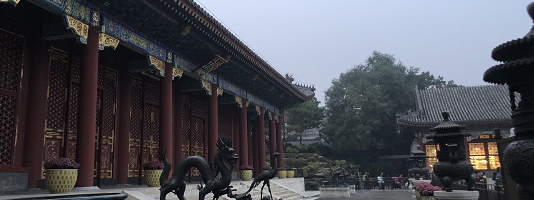About us

There is a long tradition of teaching Sinology at LMU. In 1831 the Paris-educated orientalist Heinrich Kurz (1805–1873) was employed to teach Chinese (and dismissed after only one semester for political reasons). Two years later, in 1833, Karl Friedrich Neumann (1793–1970) was appointed to a professorship which included teaching Chinese literature and language. (Both these scholars were also employed for a time by the Bavarian State Library, which marked the beginning of a long-term cooperation between these two institutions.) Not until 1939, however, was a professorship of Sinology approved, and this position was not filled until 1946 when Erich Haenisch (1880–1966) became the first chair holder. At the time Haenisch had about ten students of different semester levels. His successor, Herbert Franke (1914–2011), shaped the institute until his retirement in 1979. Franke’s research focused on China’s “Middle Ages” and institutional development; he also gave special attention to the cultural history of ethnic groups in Central Asia whose fates were closely tied to that of China. In the more recent past, Wolfgang Bauer (1930–1997), between 1966 and 1997, Helwig Schmidt-Glintzer, between 1981 and 1993, Thomas O. Höllmann (currently president of Bayerische Akademie der Wissenschaften), between 1997 and 2017, and Roderich Ptak, between 1994 and 2021, have taught at the institute.
Today the institute includes three full professors, Hans van Ess, Armin Selbitschka and Max Oidtmann, several assistant professors, research assistants, language teachers, and additional ad hoc positions to serve Sinology majors and minors, as well as students studying for other degrees.

